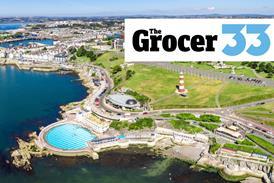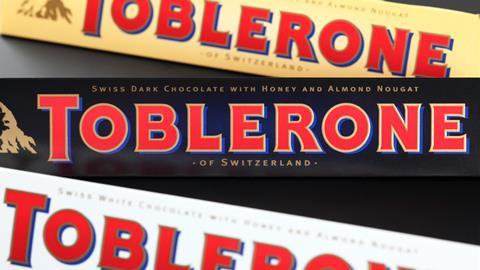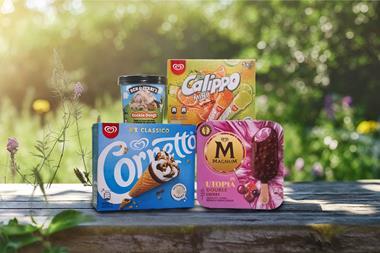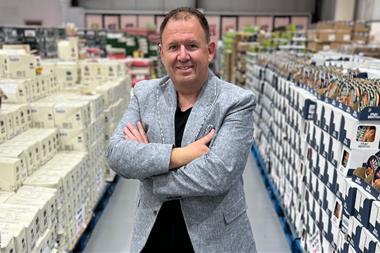It was inevitable, really, that shoppers’ insatiable appetite for Dubai-style chocolate was going to result in a pistachio shortage.
The subject of a viral TikTok trend, ‘Dubai chocolate’ typically refers to ultra-indulgent milk chocolate tablets stuffed with pistachio creme and pastry. While undoubtedly an acquired taste, over recent months, the bar has inspired a swathe of me-too launches from suppliers and retailers alike – each one keen not to miss out on a piece of the pistachio-filled action.
Lindt was the first major brand to capitalise on the trend in the UK, launching a limited run of Dubai Style Chocolate (rsp: £10/145g) in December, ahead of a nationwide rollout in Sainsbury’s, Waitrose and Ocado last month.
Morrisons listed its version – the Flair Pistachio Kunafa Dubai Chocolate Cake Bar (rsp: £4/55g) – in January, while Home Bargains rolled out Wawi’s DuBites (rsp: £3.99/100g) in March.
Lidl then launched a limited run of 6,000 Dubai Style Chocolate bars under its own-label J.D. Gross brand on TikTok Shop (£3.99/122g plus £1 delivery) in March. The bars rolled into Lidl stores a week later at the same price – minus the £1 Evri delivery cost, of course.
Last week, Iceland rolled out two branded iterations of Dubai-style chocolate: Nelino Dubai-Style Chocolate (rsp: £2/62g) and Bolci Dubai Chocolate, (rsp: £5/100g). Last, but of course not least, M&S has added a Pistachio spin-off (rsp: £8.50/280g) of its chunky, loaded milk chocolate tablet, The Big Daddy, which will hit stores tomorrow.
Dubai chocolate fans are now spoilt for choice.
Pistachio shortage
Demand for Dubai-style chocolate is so high that it has triggered an international shortage of pistachio kernels. Prices of the key ingredient, largely grown in the US and Iran, have surged from $7.65 to $10.30 a pound, nut trader CG Hacking told the Financial Times.
Commentators are remarking on the surprising power of a social media trend to influence agricultural economies. But this is nothing new, and the pistachio shortage has itself been well signposted.
Waitrose and Lidl both imposed two-bar limits on purchases of Dubai-style chocolate in March, in an effort to manage their stock levels. Earlier this month, Ritter Sport UK & Ireland MD Benedict Daniels shared his concerns over ingredients sourcing with The Grocer.
Due to a halo effect of the Dubai-style chocolate trend, Ritter’s Pistachio bar (£2.20/100g) was selling “over 100 units per store per week” in some Tesco stores, making it Ritter’s “fastest-ever selling SKU in the UK,” Daniels said.
“The problem is keeping it in stock… We can’t just go and get any pistachios on the open market, they have to hit a certain quality criteria and naturalness criteria, which limits the options for us.”
But while shelves left empty of Dubai-style chocolate lines might be disappointing for consumers, the pistachio shortage is small fry for chocolate manufacturers, who are dealing with a much larger problem.
Rising chocolate prices
A short crop of cocoa from west Africa in the 2023/24 season triggered a run on the commodity, causing cocoa prices to surge to record highs throughout 2024 and into early 2025. Leading chocolate manufacturers have shrunk pack sizes and increased prices to mitigate the impact of increased input costs.
Against this backdrop, Easter eggs and chocolate bunnies shot up in price by as much as 50% in the mults this year.
Soaring cocoa prices might explain why Mondelez has taken the axe to its dark chocolate Toblerone. The chocolate giant claimed it was responding to shoppers’ “changing tastes”, but Dark Toblerone contains a higher proportion of cocoa than its Milk counterpart, which likely factored into the decision to retire it.
Meanwhile, suppliers and retailers are launching ever-more extravagant NPD to justify higher price points for chocolate. Just look to this year’s Easter ranges: the likes of Waitrose’s No.1 Chocolate Croissant (rsp: £15/275g) and M&S’s Scrummy Bunny Munch Loaded Egg (rsp: £12/265g) effectively positioned chocolate as a luxurious, occasion-driven purchase.
This repositioning of chocolate – as a treat, rather than an everyday staple – will be necessary as we navigate the ongoing cocoa crisis. Perhaps, in this context, brands like Lindt have got the right idea, commanding a higher shelf price of £10 per bar of Dubai-style chocolate rather than trying to compete with the discounters.
After all, chocolate should be about “putting together really good ingredients”, even it means a premium price tag, argues Ella Mckay, founder of premium chocolate brand Fatso. Your play, Cadbury.




















No comments yet